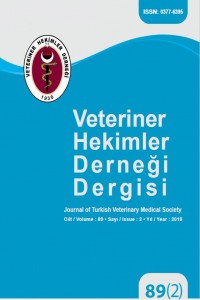Abstract
Ticari üretiminin 22. yılında GD
bitkiler global düzeyde 1,5 milyar hektar ekilebilir arazinin yaklaşık % 12’sinde
yetiştirilmektedir. Bu bitkiler 2016 yılında özellikleri açısından; % 47 HT
(herbisit toleranslı), % 12 Bt (insekt toleranslı) ve % 41 yığın özellikli ve tür
açısından; soya fasulyesi (% 50), mısır (% 22), pamuk (% 12), kanola (% 5) ve
diğer türler (% 11) şeklinde sınıflandırılmıştır. Genetik mühendisliği
sayesinde hâlihazırdaki ürünler dışında yakın gelecekte; endüstriyel üretime
daha uygun, farmasötik sanayi için önemli girdileri üretebilen, besleyici özelliği
zenginleştirilmiş, kuraklık gibi zor iklim koşullarına, tuzluluk ve uygun
olmayan pH seviyesi gibi çevresel stres faktörlerine ve zararlılara karşı dayanıklılığı
arttırılmış türlerin üretilmesi planlanmaktadır. Günümüzde üretilen GD bitkilerin
çiftçilere ve üretici ülkelere fayda sağladığı çeşitli çalışmalarda belirtilmiştir.
Sürdürülebilirlik ve sosyo-ekonomik değerlendirme çalışmalarında bu ürünlerin
avantaj ve potansiyel faydaları açıklanmıştır. Ancak GD ürünlerin kamuoyu tarafından
kabul gördüğünü söylemek mümkün değildir. Bunun öncelikli nedenleri, alanla
ilgili bilinmezlikler, önyargılar ve olası risk unsurlarının yarattığı endişe
durumu olabilir. GD bitkiler hakkında oluşturulan risk analiz raporları da bu
bitkilerin insan sağlığına ve ekosisteme etkisini değerlendiren deneysel çalışmaların
yapılması konusuna vurgu yapmaktadır. Gelecekte dünyayı besleme ve alternatif
enerji kaynaklarının üretimi hususunda faydalı olabileceğinden bahsedilen bu ürünlerin
potansiyelinden yararlanabilmek için üretim öncesinde uzman ekiplerin işbirliğiyle
sağlık, biyogüvenlik ve sürdürülebilirlik yönüyle çeşitli Ar-Ge çalışmalarının
yapılması önem taşımaktadır.
References
- .
Abstract
In the 22nd year of commercial production,
GM crops are cultivated about 12% of 1,5 billion hectares of arable land on the
world. To classify this crops in terms of traits in 2016; 47% HT (herbicide
tolerant), 12% Bt (insect resistant) and 41% stacked traits and in terms of
species; soybean (50%), maize (22%), cotton (12%), canola (5%) and other species
(11%). Through the applications of genetic engineering, in addition to traits
gained by currently available GM crops, in the near future crop species which
planned to be produced are; more suitable for industrial production, cabaple to
produce important inputs for the pharmaceutical industry, biofortified and increased
resistance to; difficult climate conditions such as drought, environmental
stress factors such as salinity and unsuitable pH conditions and different
pathogens. GM crops that are cultivated nowadays are mentioned in several
studies which have benefits to farmers and the countries that produce these
products. The advantages and potential benefits of these products are explained
detailedly in the studies that consider socioeconomic status and
sustainability. However, it is not possible to say that GM crops are accepted
by the public. Ambiguities about the field, prejudices and concerns related to
possible risk factors may be the main reasons of this cautious attitude. Risk reports
related to GM crops also emphasize to conduct empirical studies about the
effects of these crops on human health and ecosystem. To obtain benefit from
the potential of these products which are particularly said to be beneficial
for feeding the world and production of alternative energy sources in the
future, it is important to make research and development studies (r&d) for
health, biosafety and sustainability in collaboration with specialists before
cultivation.
References
- .
Details
| Primary Language | Turkish |
|---|---|
| Journal Section | INVITED PAPER / REVIEW |
| Authors | |
| Publication Date | June 15, 2018 |
| Submission Date | January 28, 2018 |
| Acceptance Date | April 2, 2018 |
| Published in Issue | Year 2018 Volume: 89 Issue: 2 |
Veteriner Hekimler Derneği Dergisi (Journal of Turkish Veterinary Medical Society) is an open access publication, and the journal’s publication model is based on Budapest Access Initiative (BOAI) declaration. All published content is licensed under a Creative Commons CC BY-NC 4.0 license, available online and free of charge. Authors retain the copyright of their published work in Veteriner Hekimler Derneği Dergisi (Journal of Turkish Veterinary Medical Society).
Veteriner Hekimler Derneği / Turkish Veterinary Medical Society


